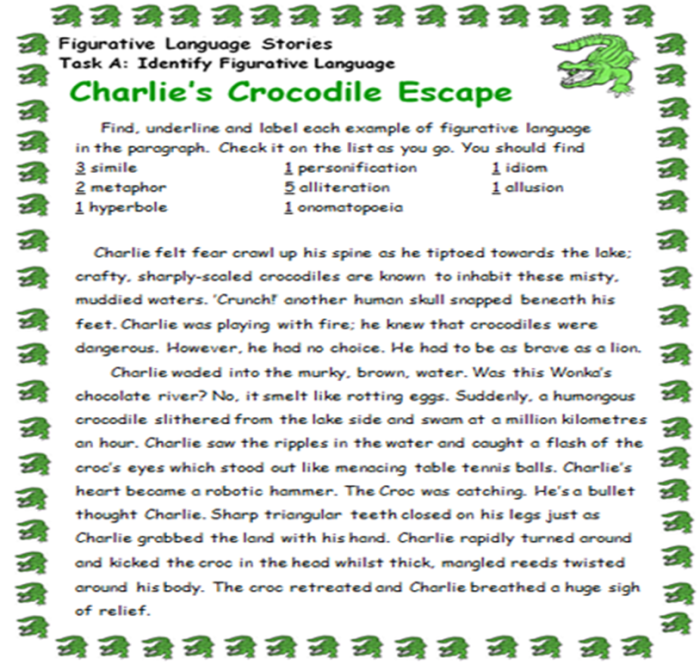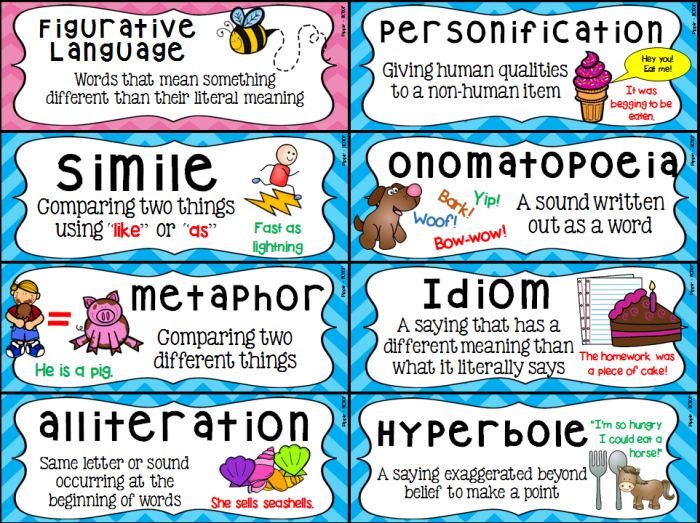Figurative language stories 3 dad’s barbecue answer key – Embark on a literary journey with “Figurative Language Stories: Dad’s Barbecue Answer Key,” where the intricacies of figurative language are tantalizingly explored. This comprehensive guide unlocks the secrets of storytelling, revealing how these literary devices captivate readers and enhance the narrative experience.
Delve into the enchanting tale of “Three Dad’s Barbecue,” where metaphors, similes, personification, and hyperbole intertwine to paint a vivid tapestry of emotions and imagery. Discover how figurative language transforms ordinary words into extraordinary expressions, elevating the power of storytelling.
Figurative Language in Storytelling: Figurative Language Stories 3 Dad’s Barbecue Answer Key

Figurative language is a literary device that uses words or phrases in a non-literal sense to create a vivid or imaginative effect. It allows writers to express ideas and emotions in a creative and engaging way.
Examples of figurative language include metaphors, similes, personification, and hyperbole. These techniques can be used to make stories more memorable, evoke emotions, and enhance character development.
Three Dad’s Barbecue: Figurative Language Analysis
The story “Three Dad’s Barbecue” by Maya Angelou is a rich example of figurative language.
- Metaphor:“The smoke from the barbecue pit was a blue feather in the sky.”
- Simile:“The children played like kittens in a basket.”
- Personification:“The wind whispered secrets to the trees.”
- Hyperbole:“I ate so much barbecue that I could barely breathe.”
These figurative devices help to create a vivid and engaging atmosphere, making the story more memorable and impactful.
Figurative Language Techniques, Figurative language stories 3 dad’s barbecue answer key
| Figurative Language Technique | Definition | Example |
|---|---|---|
| Metaphor | A comparison between two unlike things without using “like” or “as.” | “The smoke from the barbecue pit was a blue feather in the sky.” |
| Simile | A comparison between two unlike things using “like” or “as.” | “The children played like kittens in a basket.” |
| Personification | Giving human qualities to non-human things. | “The wind whispered secrets to the trees.” |
| Hyperbole | An exaggeration for emphasis. | “I ate so much barbecue that I could barely breathe.” |
Benefits of Figurative Language in Storytelling
- Engages the reader:Figurative language makes stories more vivid and imaginative, capturing the reader’s attention.
- Evokes emotions:By using figurative language, writers can create specific emotional responses in their readers.
- Enhances character development:Figurative language can be used to reveal a character’s personality, motivations, and inner thoughts.
- Advances the plot:Figurative language can be used to create suspense, foreshadow events, and provide insight into the story’s themes.
Applying Figurative Language in Writing
| Figurative Language Technique | Definition | Example | How to Use Effectively |
|---|---|---|---|
| Metaphor | A comparison between two unlike things without using “like” or “as.” | “The smoke from the barbecue pit was a blue feather in the sky.” | Use metaphors to create vivid and imaginative imagery. |
| Simile | A comparison between two unlike things using “like” or “as.” | “The children played like kittens in a basket.” | Use similes to make your writing more descriptive and relatable. |
| Personification | Giving human qualities to non-human things. | “The wind whispered secrets to the trees.” | Use personification to create a sense of wonder and empathy. |
| Hyperbole | An exaggeration for emphasis. | “I ate so much barbecue that I could barely breathe.” | Use hyperbole sparingly to add humor or emphasis. |
Question Bank
What is figurative language?
Figurative language is the use of words or phrases in a non-literal way to create a vivid or dramatic effect.
What are some common types of figurative language?
Metaphors, similes, personification, hyperbole, and imagery are some common types of figurative language.
How can I use figurative language effectively in my writing?
Use figurative language sparingly and purposefully to enhance your writing’s clarity, impact, and memorability.


